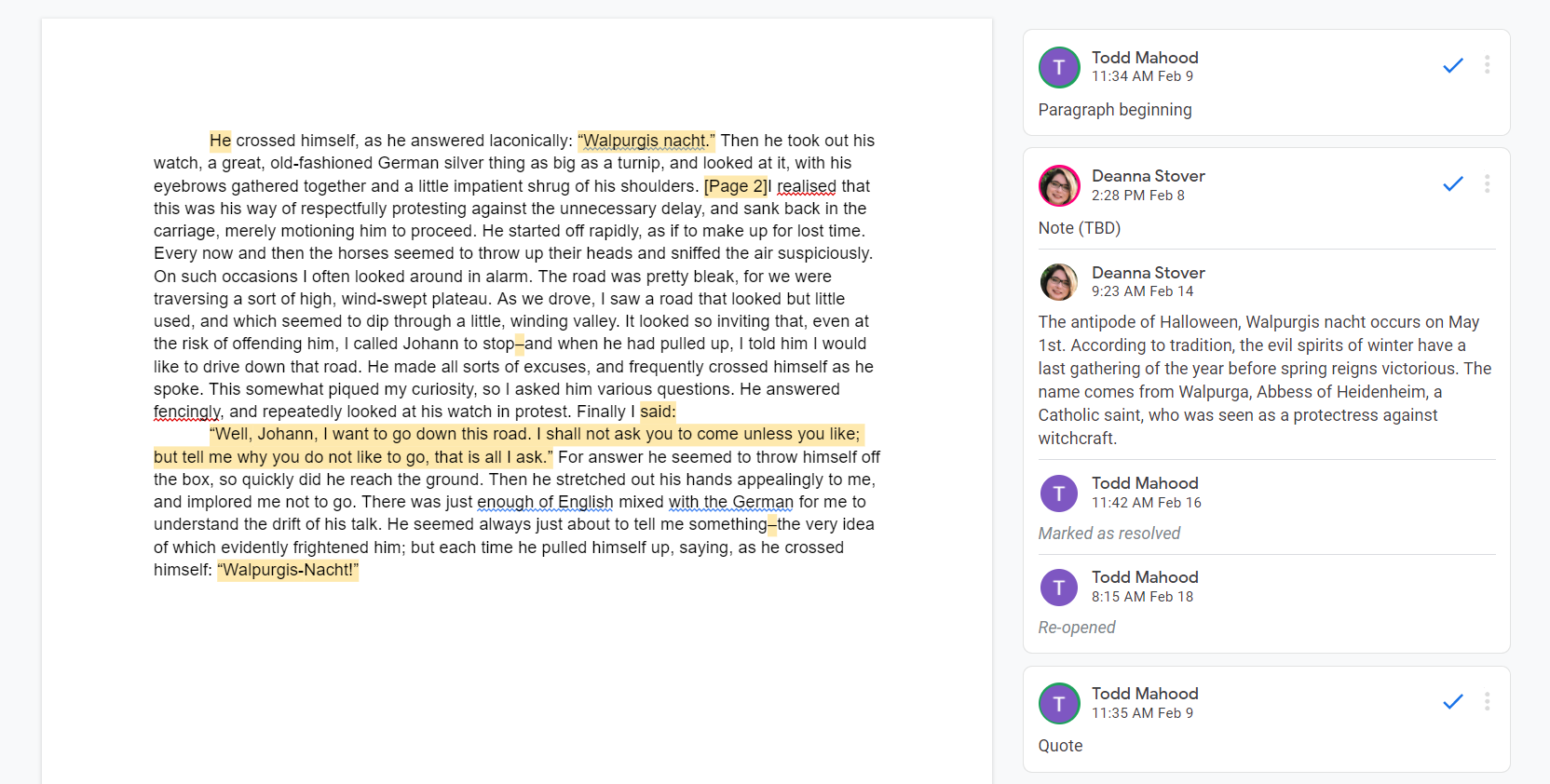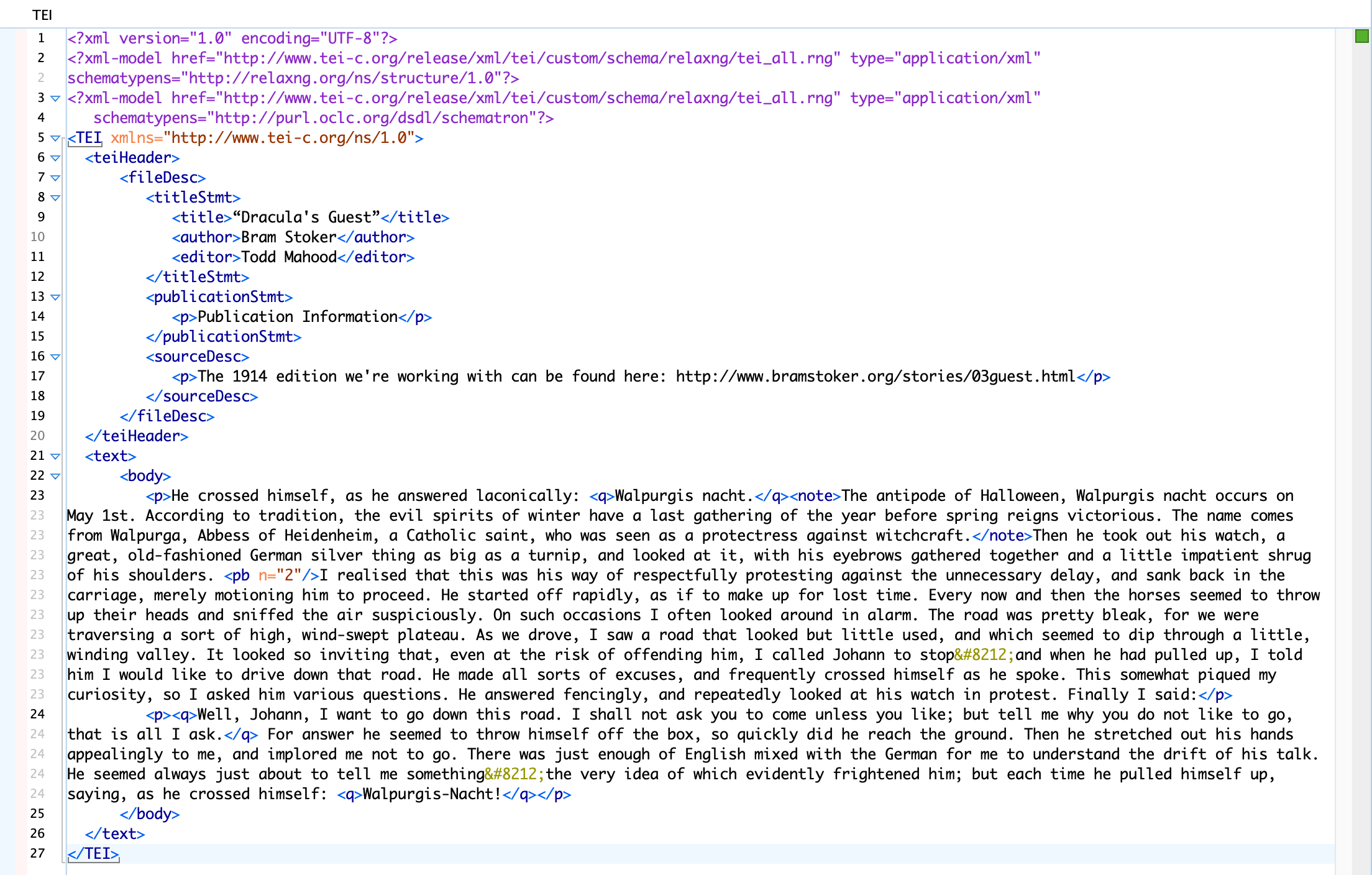Background
The goal of this assignment was to encode “Dracula’s Guest” using the Text Encoding Initiative (TEI) standards in preparation for a digital edition. “Dracula’s Guest” is a short story written by Bram Stoker about a curious Englishman that wanders off during his trip to Munich. After a near-death encounter, the Englishman is saved by soldiers sent at the notice of Dracula’s telegram. I was responsible for encoding the section where the Englishman questions Johann, his fearful driver, before deciding to explore the road leading to the abandoned village. To do this, I used the TEI set of Extensible Markup Language (XML) tags and Oxygen. Oxygen is a XML editing suite that provides tools to format, manipulate, view and publish XML documents.
Google Docs Exercise
To get ready to code, I used Google Docs to highlight several important features of my text. For this project, XML was used to denote visible characteristics of the text. This is important because we want the text to be properly formatted when it is displayed digitally. During the exercise, I was looking for paragraphs, quotes, page breaks, em-dashes, titles, inscriptions, and addresses. In my specific section, I noted the use of several quotes. All quotes were either questions or responses to questions. This demonstrates the inquisitive nature of the Englishman and supports the idea that he is an abnormally curious character.

This activity helped me learn what to look for when tagging text and made the actual coding process much easier and quicker. Completing this task first was especially important for me, because I was unable to tell the difference between em-dashes and hyphens after pasting the text into Oxygen. Had I not completed the Google Docs exercise, I would have likely missed several em-dashes.
Encoding the Text
I have prior experience coding in Python and Java, so I was not very intimidated by the thought of learning a new language. However, I had never looked at markup language syntax before and the concept of wrapping text was new to me. Fortunately, I caught on pretty quickly and was able to finish my portion of the story without too many issues. I did face some challenges as I went through the process, though.
One of the challenges I faced was determining whether or not the code I created did what it was supposed to do. The editor has a box in the upper right corner of the window to show if the document is valid. Although, as I know from my previous experience with Java and Python, just because the code is syntactically correct doesn’t mean it is without bugs or that it accomplishes the goal for which it was created. Oxygen’s solution to this problem is their “Author” view, however I lacked the knowledge of how several tags were supposed to appear in their rendered form which made this feature less useful for me.
I also had to adjust to the autocomplete functionality of Oxygen editor. When I typed out tags, Oxygen would automatically add the closing tag. This would not be an issue if I were creating the text in Oxygen, but because I was pasting the text and then typing the tags I made a few mistakes. Thankfully, it was nothing a quick proofreading could not fix.

Closing Remarks
I really enjoyed this project, despite the minor difficulties I faced. I learned about how to encode texts, but also about the importance of encoding texts. Hopefully, I will get a chance to revisit these newly developed skills later in my career.